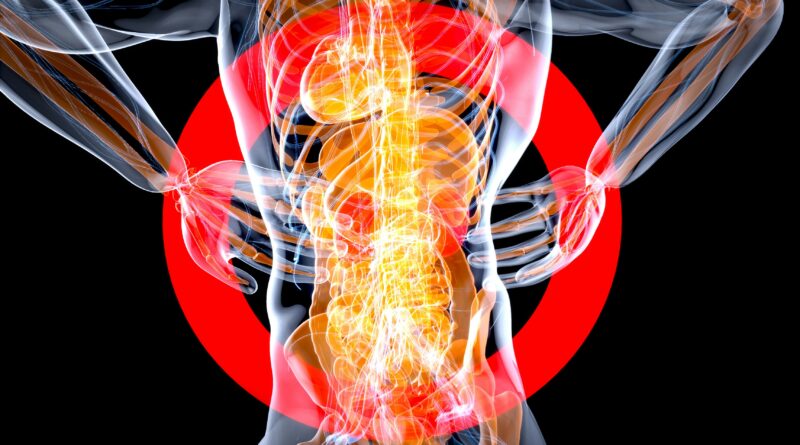Climate Change and the Silent Kidney Epidemic: A Crisis From El Salvador to India
For years, Miguel would rise with the sun and step into the fields of El Salvador, his machete glinting in the half-light as he hacked through dense stalks of sugar cane. At 33, the work was both ritual and necessity. He started before dawn, hoping the early hours would soften the sting of the tropical heat. But last December, his morning looked different. Instead of gripping the steel blade, he held his wife’s hand in a cramped clinic waiting room in Tierra Blanca. Miguel — not his real name, used here to shield his identity — was no longer worrying about the cane harvest. He was waiting to hear if his kidneys had given up on him.
The unease was not his alone. Since the late 1990s, the farming belt of Bajo Lempa on El Salvador’s Pacific coast has been stalked by a silent epidemic. Chronic kidney disease of unknown cause — CKDu, as scientists call it — has swept through villages, claiming young and middle-aged men in alarming numbers. Most are farmhands or manual laborers without diabetes or hypertension, the usual triggers for kidney failure. Here, one in four adult men has been found to suffer from kidney disease, compared to one in ten worldwide. In Bajo Lempa, nearly 17 per cent of men live with kidney failure — an astonishing toll for a place where agriculture is both livelihood and fate.
What began as a baffling local affliction in El Salvador has since travelled far beyond the cane fields of Bajo Lempa. Today, more than half a dozen hotspots dot Central America and even parts of the wider world, each echoing the same grim story. No global count exists yet — the data remain patchy, the scale elusive. But occupational-medicine specialist Emmanuel Jarquín estimates that tens of thousands may already have lost their lives to this disease, with the toll rising silently year after year.
The mystery may not be solved, but the outlines are growing sharper. While no single cause has been identified, scientists increasingly point to the brutal combination of heavy labor and searing heat in the sugar-cane fields as a prime culprit. Beyond El Salvador, the pattern repeats itself — among rice farmers bent over flooded paddies, construction crews on sunbaked scaffolds, and miners deep underground.
Researchers warn that the crisis will only deepen. As climate change intensifies, prolonged heatwaves are expected to drive the number of kidney disease cases higher, contributing to what is already a mounting global health burden. In May, the World Health Organization’s governing body moved to formally recognize kidney disease as a leading cause of death and disability, calling for stronger international measures to slow its advance.
“Kidney disease is a stark reminder of how relentless heat wears down the body,” says Ollie Jay, a heat physiologist at the University of Sydney. In that sense, the men of Bajo Lempa — sweating under merciless skies — were not just victims of an epidemic, but an early warning to the world.
An Emerging Epidemic
It began quietly, more than twenty years ago, in the fields of Bajo Lempa. Young men who seemed otherwise healthy started complaining of exhaustion, anemia, and a strange heaviness that no amount of rest could shake off. At first, they blamed the grueling rhythm of their days. Sugar-cane cutters, after all, are “marathon workers,” as Fabiano Amorim, a physiologist at the University of New Mexico, puts it. They swing machetes for hours in blistering heat, often without proper meals or even water to keep them going.
Rest was a luxury few could afford. Families depended on the meagre wages the fields provided. So the men swallowed painkillers, most often ibuprofen, and trudged back into the rows of cane. But for many, the fatigue grew worse until even getting out of bed became impossible.
Those who could scrape together enough money for the two-hour journey to Rosales National Hospital in San Salvador. There, doctors delivered a devastating truth: their kidneys had failed. The body’s natural filters had collapsed, leaving toxins like uric acid to build up in the blood. Without dialysis, the fluids would overwhelm the lungs, weaken the heart, and eventually bring death.
The first wave of studies brought no clear answers. Suspicions ranged from pesticides and heavy metals to viral pathogens, the overuse of anti-inflammatory drugs, and relentless heat stress. Today, researchers lean toward a more complex explanation: CKDu may not have a single cause but many, shifting across individuals, landscapes and time. Still, mounting evidence — from epidemiological surveys to animal models — keeps circling back to the same suspect. In the end, it is the heat that may be slowly killing them.
Young Indian Men with No Diabetes or BP Suffer Unexplained Kidney Damage
When 32-year-old Shivani, who worked with a multinational insurance company as a salesperson, was diagnosed with chronic kidney disease (CKD) – requiring dialysis and eventually a kidney transplant- her family members were shocked. She had no history of hypertension, diabetes or any other disease. Even though there was no such disease in her family, the condition made the doctors and family alike baffled.
An Old Puzzle, A New Crisis
“We used to call it Uddanam nephropathy,” recalls Dr T. Ravi Raju, now pro-chancellor at Apollo University, but once a young physician at the state-run King George Hospital in Vizag. “We didn’t know what triggered it. Patients showed none of the usual signs — no swelling of the hands or feet, no high protein levels in the urine. It was baffling.”
What the doctors did know was that similar illnesses had cropped up elsewhere. In the bucolic farmlands of Europe, peasants had fallen prey to a strange kidney ailment tied to the birthwort plant, its reed-like stems sprouting thick among wheat fields. Compounds from the plant — aristolochic acid — were later found to cause both severe kidney disease and cancer.
But CKDu is no longer a malady of farmhands stooped under the midday sun. In 2023, doctors at Rajiv Gandhi Government General Hospital in Chennai began reporting cases among city dwellers as well. A statewide epidemiological study brought the scale into sharp focus: nearly 8 per cent of Tamil Nadu’s population was living with kidney disease — and in half of those cases, there was no clear cause to be found.
Heat, Salt and Silent Damage
As the planet heats up, scientists are beginning to draw a troubling line between rising temperatures and failing kidneys. Early studies suggest that extreme heat, coupled with relentless dehydration, could be quietly pushing more people into danger. Each time the body runs dry, the kidneys are forced to strain harder, working beyond their limits. Over time, this stress wears them down, leading to damage that cannot be undone. Regular water breaks in the fields may sound like a simple solution, yet in many places, clean drinking water is scarce — and what flows underground often carries its own poisons.
For some, the threat comes not just from thirst but from what they consume. Excessive salt intake, much of it hidden in processed foods, has long been linked to kidney failure. Sodium, in high amounts, can erode the lining of blood vessels even in those without high blood pressure. But the danger does not end on the plate. Across large parts of India, groundwater — the primary source of drinking water — is laced with salt, pesticides and heavy metals, leaching in from agriculture and industry alike. And it is the kidneys, the body’s filters of last resort, that bear the brunt of this toxic tide.
How Do We Keep Cool?
The human body walks a delicate tightrope when it comes to temperature. Core heat hovers in a narrow band of 36–37°C, says Daniel Vecellio, a biometeorologist at the University of Nebraska Omaha, and the body spends a surprising amount of energy keeping it there. When things get too warm, blood vessels in the limbs widen in a process called vasodilation, pulling blood away from vital organs and towards the skin, where heat can escape. If the temperature keeps rising, sweat glands open up, releasing fluid that cools the skin as it evaporates. A fan or passing breeze can make this system hum; stifling humidity, on the other hand, can choke it. Push the body too far and the balance begins to break — cramps set in, nausea blurs the senses, fainting follows. At the extremes, seizures and even death can strike.
The kidneys are among the first organs to buckle under this strain. Diverting blood to the skin means they receive less oxygen and fewer nutrients, just as the body is shedding water through sweat. Forced into overdrive to conserve fluid, the kidneys can see their function dip — even in healthy adults. “The kidneys are more vulnerable than other organs. They have a very intense metabolic demand, so small changes in blood flow tend to be more harmful,” says Catharina Giudice, an emergency-medicine physician at Harvard University.
For outdoor laborers, the challenge is doubled. Farmers and construction workers don’t just endure the sun’s heat; they generate their own through punishing physical work. Hours of sweating can leave them dehydrated by day’s end, even when they’ve been drinking water.
Until recently, many experts believed these stresses were fleeting, leaving little permanent mark. CKDu has forced a rethink. Instead of bouncing back, the kidneys may be sustaining small, repeated injuries. Each insult might pass without a hospital visit — but over the years, the damage builds, pushing workers towards irreversible kidney failure.
Prevention Steps
In El Salvador, the wave of CKDu cases has left the health system gasping. In San Pedro, a small dialysis unit serves the Bajo Lempa region, but the demand is so overwhelming that patients are rationed to two sessions a week — far below the global standard of three. At the Rosales National Hospital, the situation is no better. “At any given time, there might be five spots available for every 1,000 people who need dialysis,” says occupational-medicine specialist Emmanuel Jarquín. The waiting list moves only when someone already in treatment dies.
For those whose kidneys are faltering but not yet failing, doctors recommend small but crucial measures: controlling blood pressure, managing diabetes, shifting diets, and — where possible — moving to less strenuous work. Yet for most, such choices remain a luxury. The machete, the pickaxe, the fields — these are not just jobs, but survival.
Get updates and read additional stories on the Health Orbit Fan Page.
For Guest posts, sponsored posts and other details, please click the ‘Contact Us’ page.




